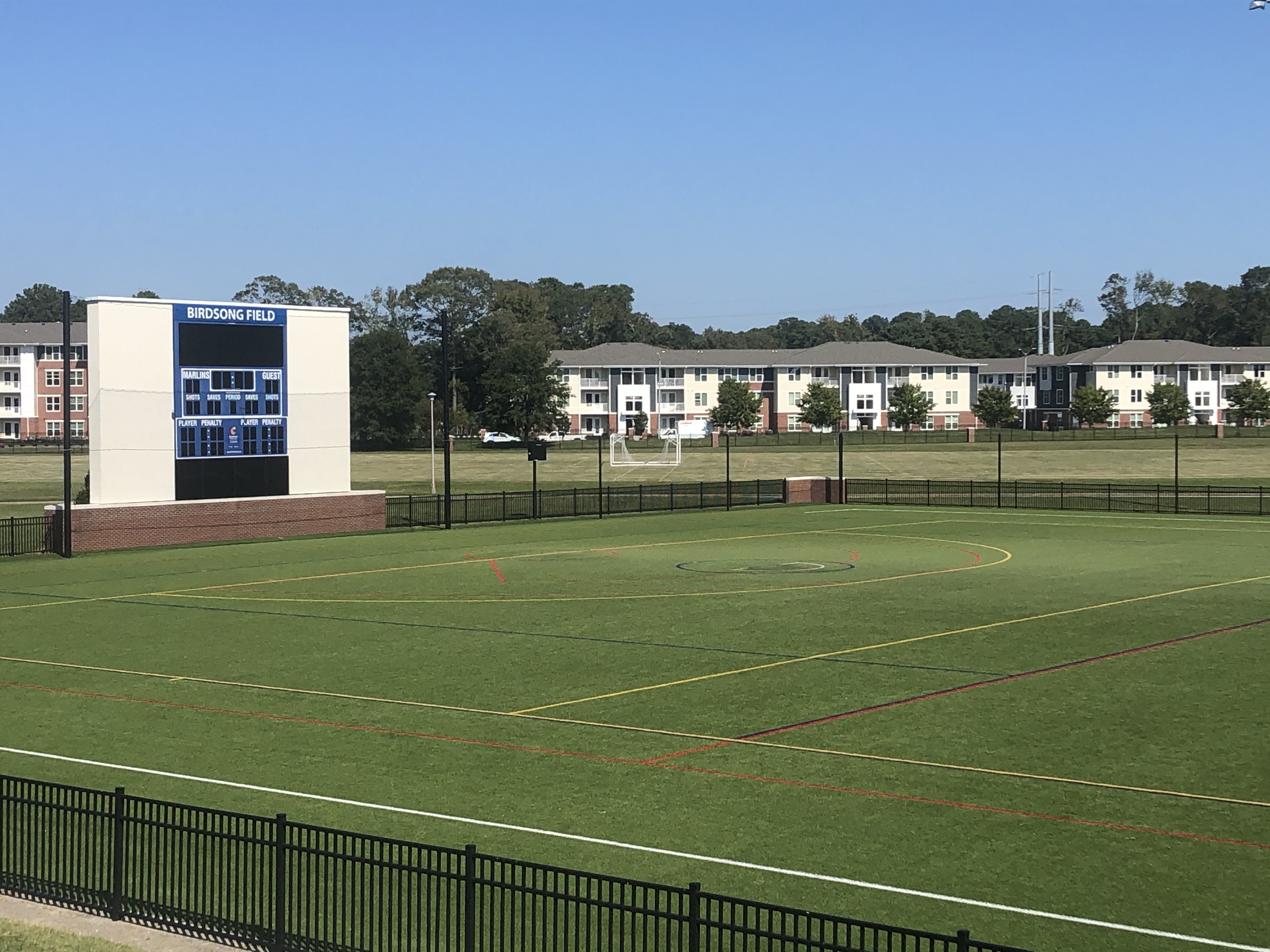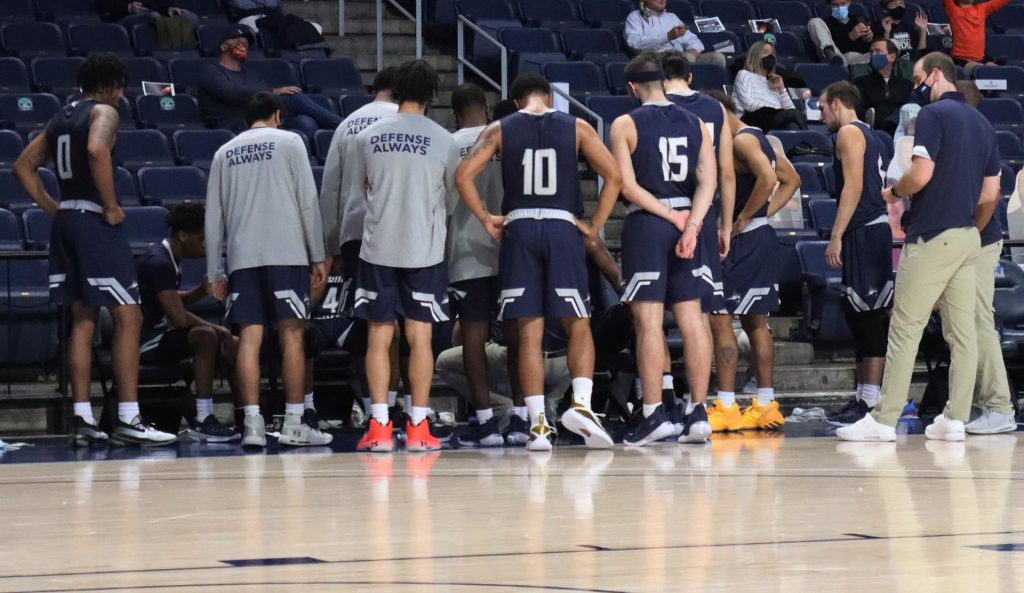Practices for athletic teams resumed Monday Oct. 5, after more than a two-week hiatus. Student-athletes were finally able to continue team workouts, meetings, and practices as they gear up for competitive play on the horizon.
During the week-span of Sept. 16 through Sept. 22, eight COVID-19 cases were confirmed on campus, bringing the cumulative total of cases for the semester to just ten. Still, the notable uptick in cases relative to the first few weeks of the semester gave the university cause to reassess protocols.
All practices were officially suspended back on Saturday, Sept. 19, after a meeting with Coach Renn determined the safest measures to curb the spread of the virus. “[The suspension was] instituted at the same time as the additional regulations, such as visitation to the residence halls,” Vice President of Campus Life and Operational Management Assistant, Keith Moore said.
“Mitigation. Pure mitigation,” Moore said regarding the motivation for all the changes to campus measures. Every area has been affected and seen increased regulation. Dining has been restricted to minimal seating, all socially distant. Club meetings have moved to virtual platforms. “It’s really impacted all aspects of campus life and operations.”
There were more regulations placed on where there could possibly be more people. “Proximity is such a factor in transmission that we looked at where people are most likely to be close to one another and then had to institute additional regulations on that to limit that possibility,” Moore said. These mandates have increased as the number of cases have increased.
“We look at what we can do to still afford some form of normalcy but also that would be in line with what we know would be best practice to limit further issues associated with transmission,” Moore said. He expressed that Virginia Wesleyan has been looking at other institutions and CDC guidelines in assessing protocols. Practices were an area that had to be addressed.
Sports teams are one of the most unique groups on campus, just because the bonds between athletes have always been strong on campus. Teams sit together at lunch, practice, and even live together. Student athletes already have “a ready-made peer group,” Moore said. Moore notes their comfort, immediate bond, and proximity as a great social factor, but he also sees it as an added motivation for precaution.
Athletic teams are “almost unlike any other group on campus,” Moore said. “Because of that comfort level, you let your guard down, and of course that’s gonna happen with any group that exists that way.” Groups like athletics in terms of close proximity have to be that much more vigilant with COVID-safe protocols, as a result.
No data has been made available as to the proportion of total cases that athletics – or any other subgroup of campus – represent. The focus is instead just on location – where the cases are and where there might be transmission. “It is possible to break it down [by subgroup], but we’re not sharing that information,” Moore said of the confirmed cases count. “That’s just simply not something we’re doing.”
What would not be present in communication, would instead be reflected by action. An increase in cases within a certain population would result in such movements as shutting down residence halls or suspending that group’s activity until the issue can be resolved.
Moore mentioned the scenario of a team or group possibly being exposed to the virus: “Where they live has more so to do than anything else,” Moore said. If there were an outbreak of cases within one team, for example, “we’d have to suspend activity, quarantine those people,” noting the suspended Kansas City Chiefs and New England Patriots football game as an example. “[They] didn’t play last night, because they have to test the offensive line for the Pats,” Moore explained. Any issue within a group has to be resolved before activity can continue.
There have been 20 cumulative cases of COVID-19 and as of Oct. 5, just 1 active case. Moore noted the success of these guidelines: “The things we put into place, the way we’re managing, the way our students are acting, means that we’re doing a good, decent job,” Moore said.
Sports are a huge part of campus life for students. This return to sports suggests a successful mitigation of COVID on campus. Now, athletics will go back to ‘Phase I’ of their three-phase system for bringing sports back. This means that while activity can resume, it will be in limited capacity, numbers and most importantly – proximity.
“We really value what athletics is for our campus,” Moore added. “It felt good to say that that would continue in earnest, even if it’s impacted or limited – it’s still happening.”
Looking ahead, sports are a competition afterall. One concern with VWU athletics being suspended would be the competitive disadvantage from the time lost.
Associate Vice President for Campus Life and Operational Management, Jason Seward does not see much in the way of that being in an issue. He acknowledges the universality of the effect COVID is having on institutions and their athletic programs.
“It’s a variety. You look at schools in the ODAC, specifically, at the time where we were going in Phase 1, they were shut down. And then when we were shut down, they were in Phase ‘Whatever’,” Seward said, noting the different approaches athletic programs have had to take this year.. “It’s very fluid. I’d say everyone is kind of on a level playing field.”
Moore emphasized the role the VWU community plays in stopping the spread of COVID. “I’m very impressed with our students,” he said. “If we all buy in, that’s it. We’re gonna get it. We’re gonna see Nov. 20,” Moore said, referencing not just a COVID-safe environment for athletics, but also reaching the full-length of the abbreviated semester outlined since August.
Finally, Moore highlighted the importance of getting it right during the fall. ““The success that we experience in the fall will be indicative of the success that we hope we have in the spring, and that’s when they’re all gonna be competing,” Moore said. “We have to get it right now, so that we can get it right in the spring.”
Alex Powers and Nicholas Mundy
ampowers@vwu.edu
namundy@vwu.edu



